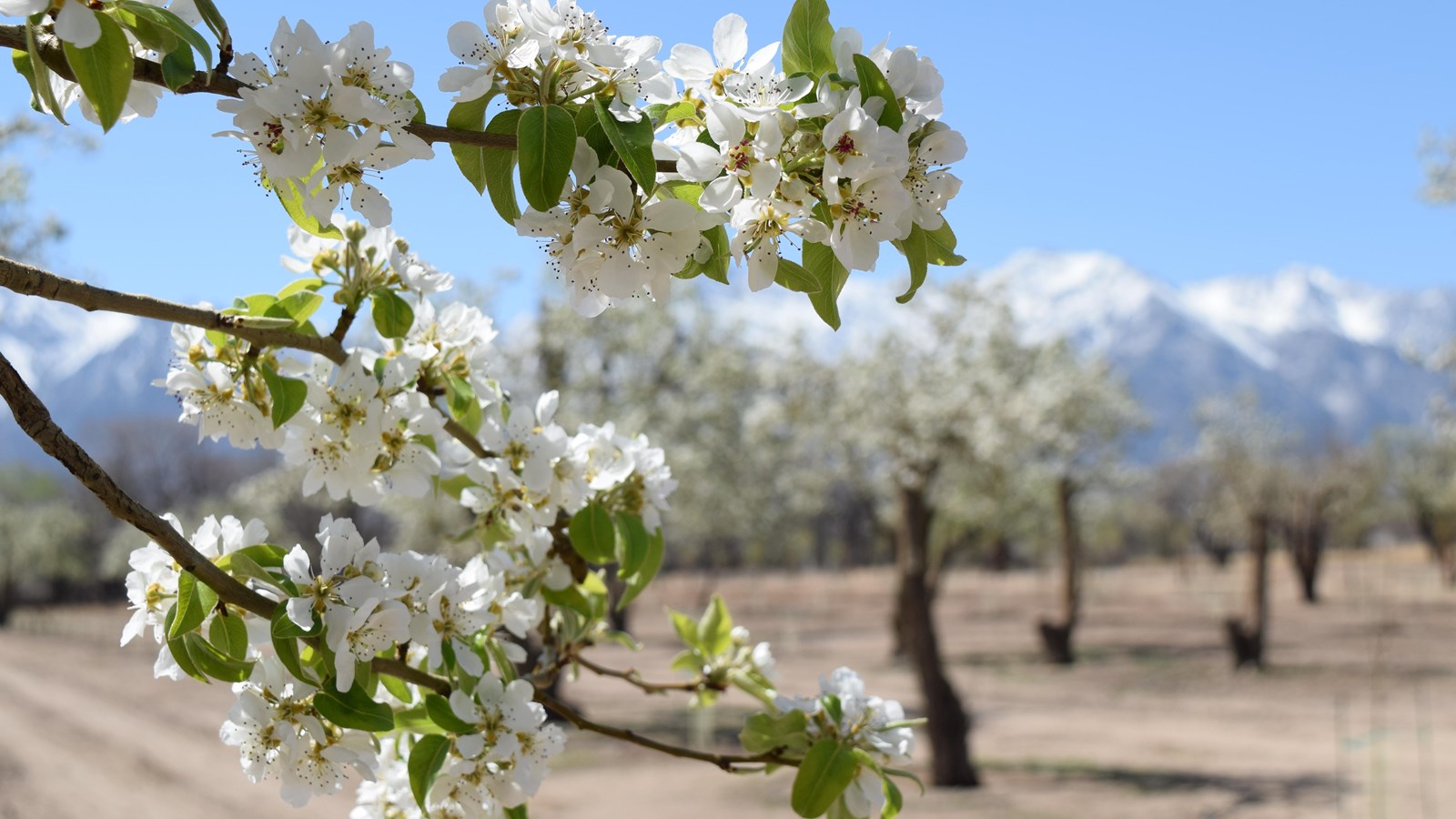Last updated: January 6, 2024
Place
Manzanar Orchards

NPS
Historical/Interpretive Information/Exhibits
“True to its name of Manzanar, from the Spanish “manzanas,” meaning apples, [Manzanar] once again flourishes with the beautiful apple blossoms which have awakened into full splendor with the arrival of Spring.”
Manzanar Free Press April 15, 1942
The orchard is a remnant from a time when hundreds of apple, pear, and peach orchards occupied the Manzanar landscape. Since farmer Romeo Wilder planted pear trees here 1918, they have thrived in years of expert care and grown resilient through long decades of neglect. Manzanar’s Bartlett and Winter Nellis pears, as well as its prize-winning Winesap and Spitzenburg apples, brought profits to a few, but others’ dreams of wealth eventually withered like the trees themselves as water became more valuable than the fruit they produced. Today, visitors may walk among these trees and imagine how they have nourished, in both body and spirit, those who have called Manzanar home.
1910-12: Envisioning an apple-growing empire, water developer George Chaffey’s Owens Valley Improvement Company plants 22,000 apple trees in the new Manzanar Irrigated Farms. By 1920, tons of apples, pears, and peaches are shipped across the nation.
1927- The City of Los Angeles acquires all water rights and land at Manzanar. Under its management, large-scale fruit production continues until the City halts orchard irrigation in 1934.
1942 – Japanese American crews prune, thin, and irrigate nearly 40 acres of abandoned orchards within Manzanar War Relocation Center. There were “some very fine trees” among them, said orchard foreman Takeo Shima. Several thousand crates of fruit are harvested and used in the mess halls.
1945-1992- Many trees die, but a high ground water table keeps these and others nearby producing. In the fall, local townspeople harvest apples and pears for baking and preserving.
Present – Since 2006, National Park Service arborists have rehabilitated more than 100 fruit trees, installing new irrigation systems, pruning, and grafting old stock to new roots to preserve Manzanar’s heirloom fruit varieties.
To hear Kenji Suematsu discuss tasting a Manzanar pear while incarcerated at the Children's Village, click here.
